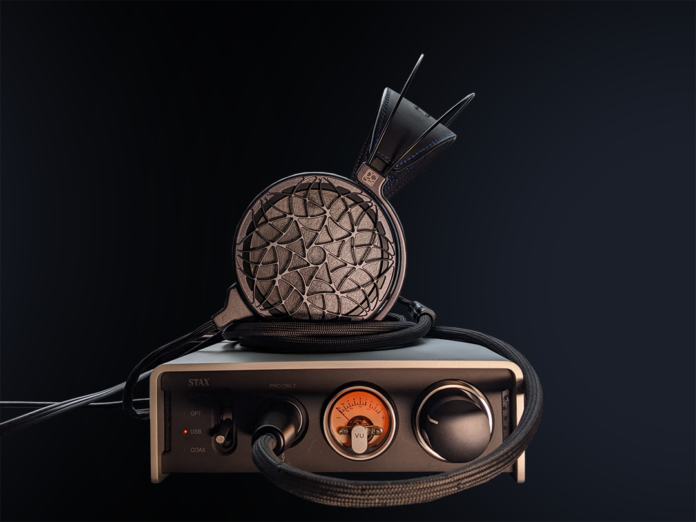Dan Clark Audio Corina Review
I had a fleeting moment with Dan Clark’s Corina, a new high-end electrostatic release from the company, when I attended CanJam this year in NYC. It was pretty impressive, and I’ve since been patiently waiting to get my hands on it for longer, due-diligence listening. I was pleased with the Dan Clark Stealth, their flagship closed-back planar headphone, and frankly blown away by its open-back counterpart the Expanse. While those headphones were essentially the premium editions of the more affordable Aeon series from Dan Clark, the Corina, priced at a whopping $4500, is a step up from the already premium-priced Dan Clark VOCE ($2600), the company’s previous electrostatic flagship.
So let’s get into it; there’s a lot we have to cover with this one.
What’s In the Box?
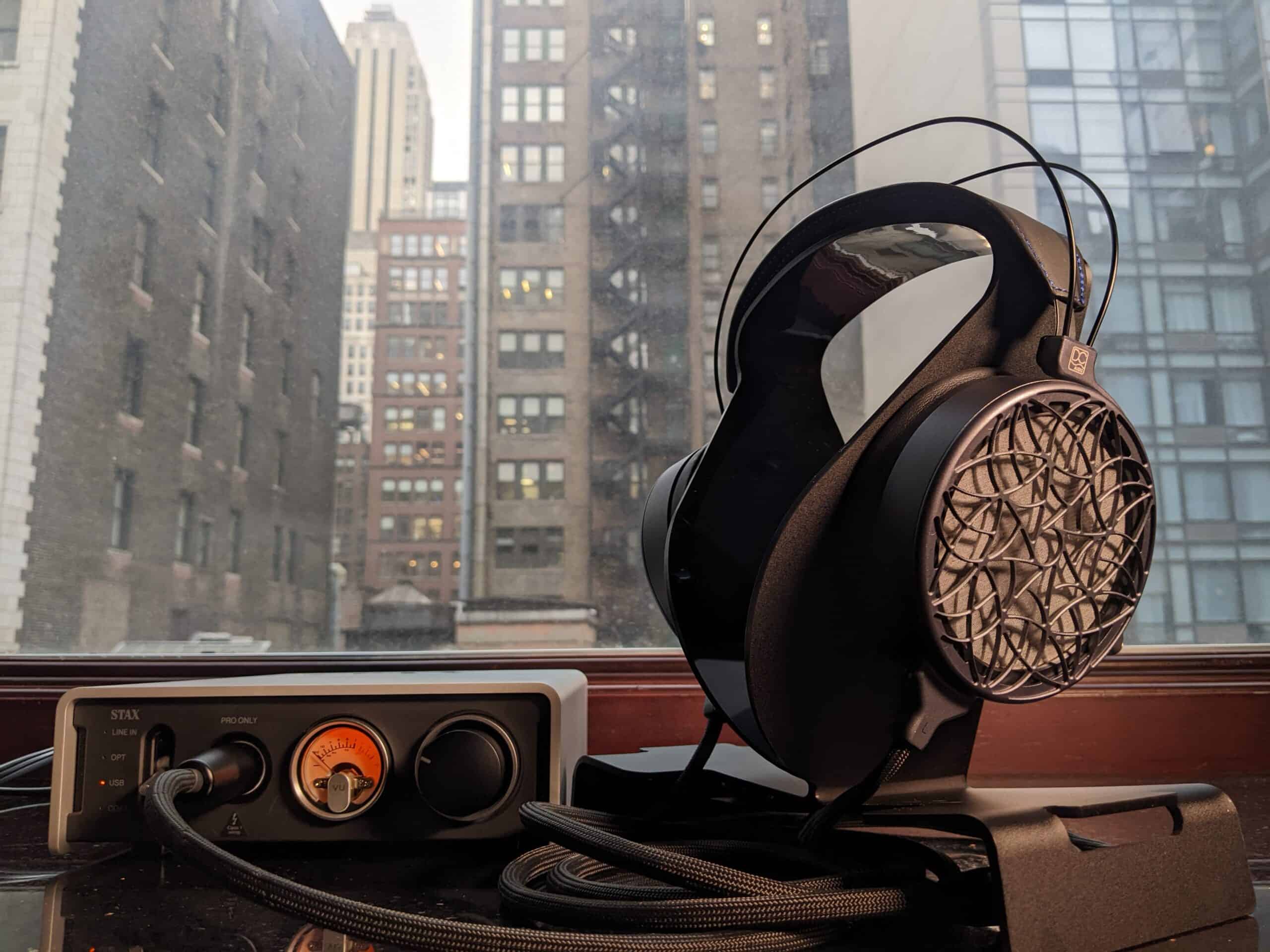
- Dan Clark Audio Corina Electrostatic Headphones
- Semi-Detachable 2 meter Electrostatic Headphone Cable
- Headphone Stand
Fit and Physical Design
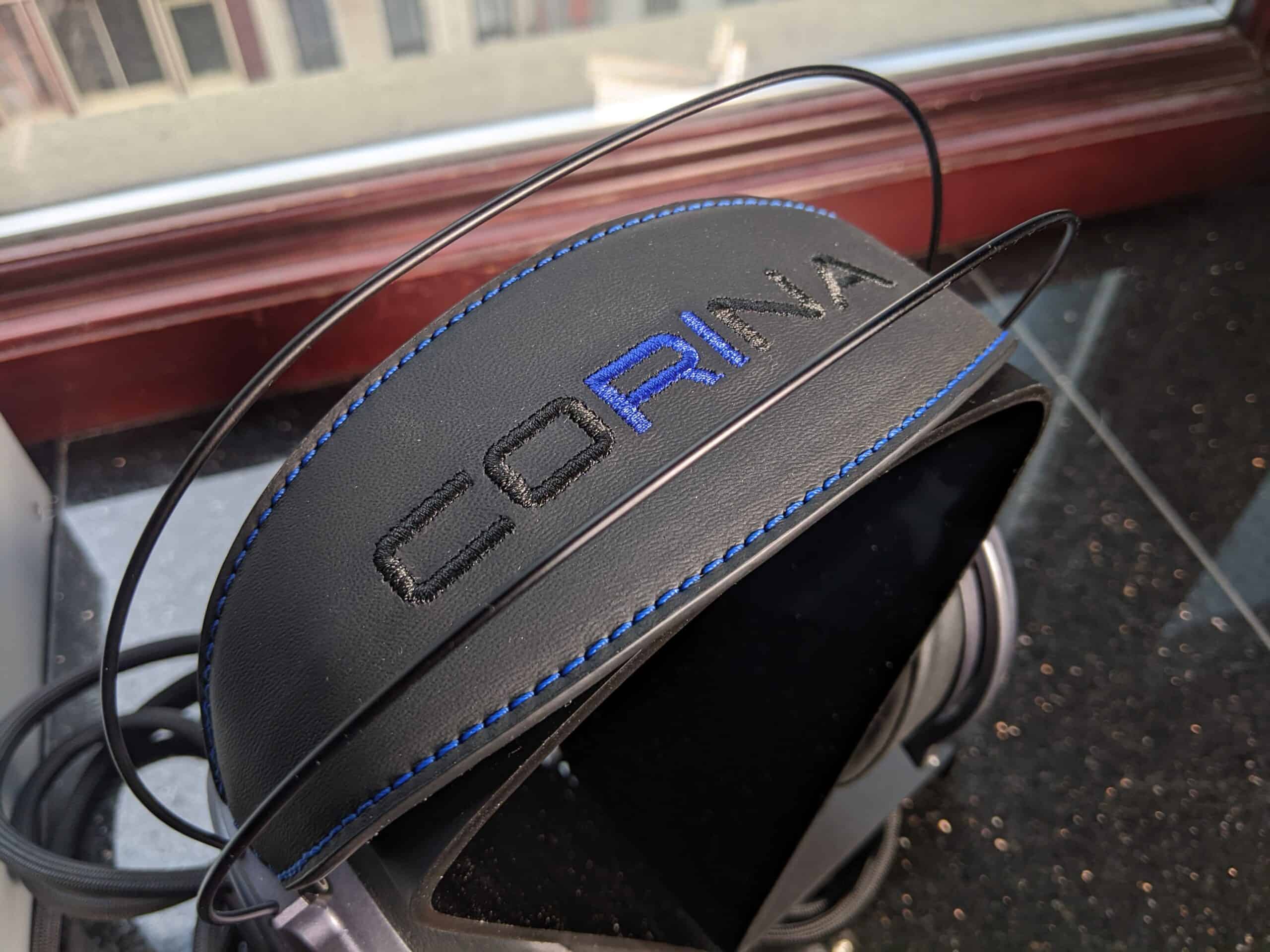
Let’s start with what’s familiar from Dan Clark’s other high-end flagships: the Corina’s frame is held together by malleable titanium alloy bands, and features a self-adjusting leather suspension headband with black and blue stitching that spells “Corina” on top. The padded underside of the headband is also stitched, with a geometric cube pattern. As I’m familiar with the Stealth and Expanse, I wasn’t surprised to find the Corina fit on my head as if it was custom made for it. Dan Clark has their flagship suspension headbands down pat, from their classy style to their extra fine-tuned calibration and resistance. So while the Dan Clark Corina is a bit heavy at 465 grams (though not very heavy in comparison to other headphones in its tier), the headband goes a long way in tricking you into thinking it’s a lot lighter than it really is. Also worth noting is the exceptional flexibility afforded in the titanium alloy frame of the headband, pictured below.
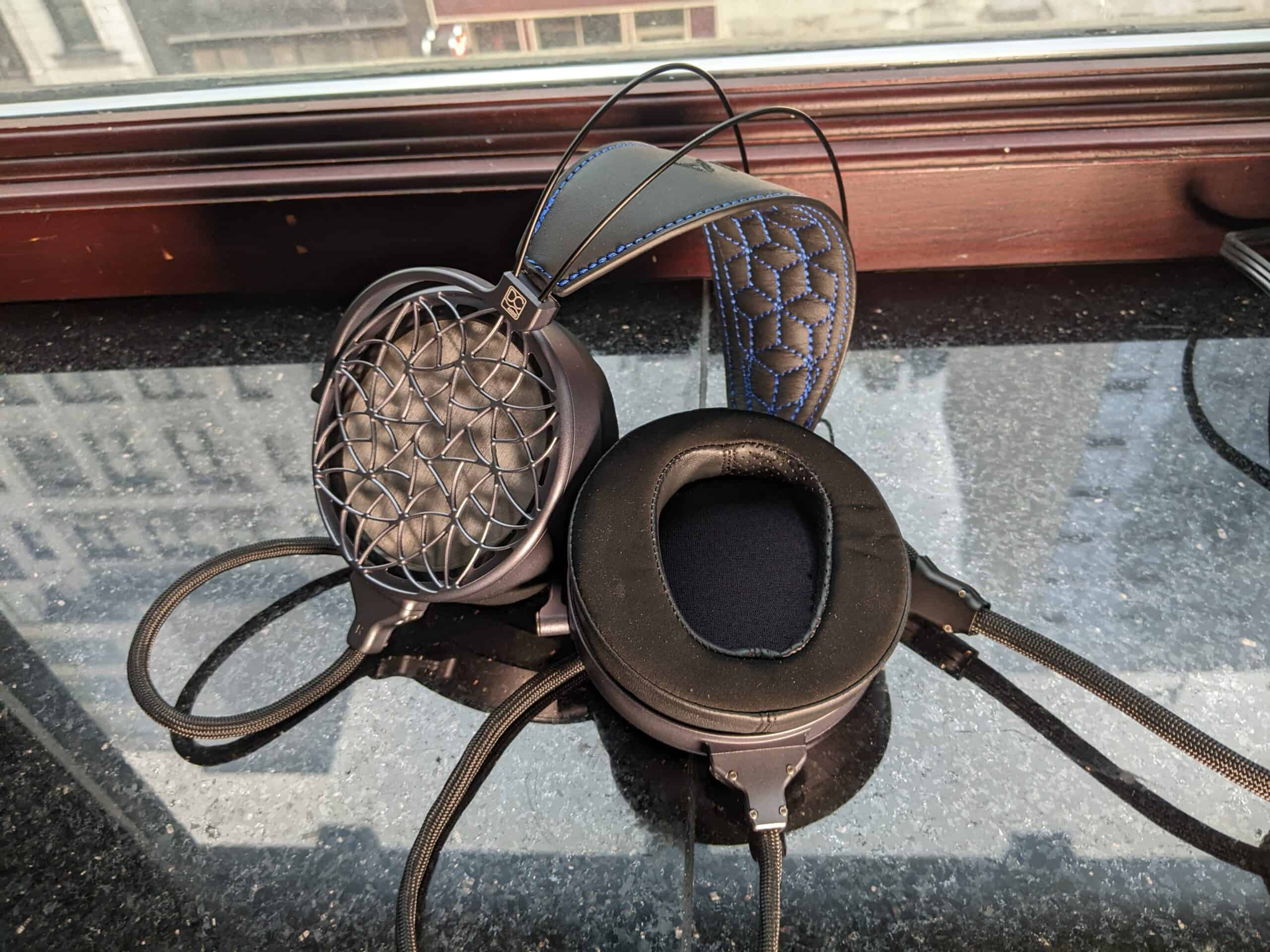
Different from the Stealth and Expanse, however, is the flexibility of the Corina’s cans. While the former two had cans that could ergonomically fold into the headband, the Corina’s cans can only move as much as a single hinge on their horizontal axis allows them to. Makes enough sense to me, as it takes… a special breed of audiophile to treat a pair of high-end electrostatics as a pair to take on the go. This line of thought is similarly reflected in Dan Clark’s decision to include a headphone stand rather than a travel case with the Corina.
The ear pads see a hybrid material design, with synthetic suede composing the surface that makes contact with a listener’s face, with what appears to be partially fenestrated sheepskin for the interior material (it was hard to find exactly what this material is – just taking an educated guess here). A detail for the nerds like myself to get excited over is that every unit of the Corina has matched ear pads to further enhance left-right channel matching. While I found the pads to squish firmly against my head and offer a high degree of comfort in tandem with the Corina’s light but secure clamp pressure, my small criticism here is the moderate heat build-up I experienced, even in the midst of the open-back design. I wasn’t sweating from it, and it would probably take some one who is particularly sensitive to this quality to make a deal-breaking complaint about it.
As for the cable: it’s thick, not very heavy, seemingly durable, and features nylon insulation on its outer-most layer. It avoids being overly stiff without being flimsy, and reminds me of a “pro” quality cable you might see in a studio. While technically detachable, it screws into place. Future owners seem encouraged to only swap cables when necessary.
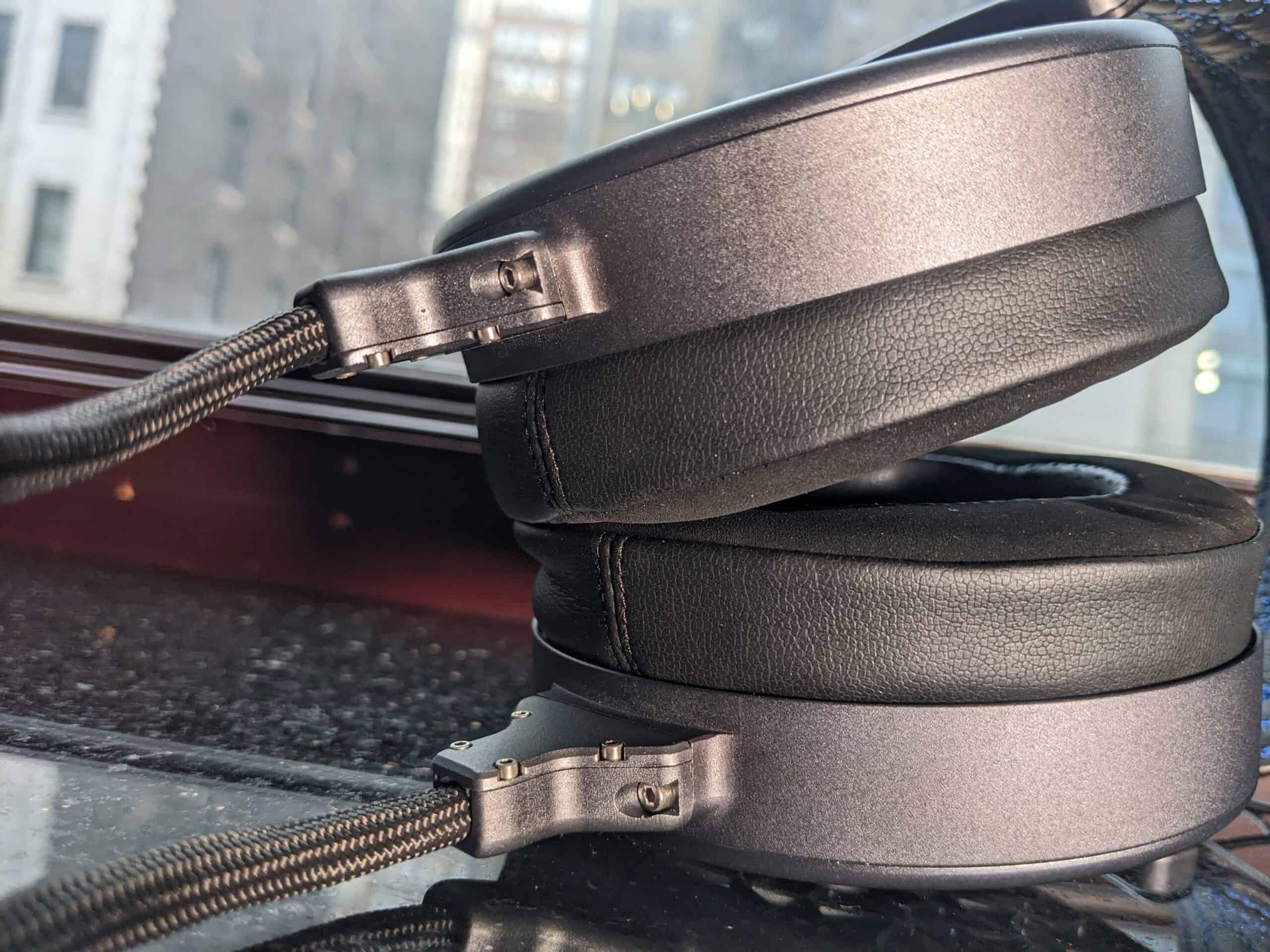
Lastly, we see a new open-back grill design from Dan Clark on the Corina’s sturdy metal cans. Again, not unlike the company’s other flagships, there’s a somewhat alien, otherworldly aesthetic that the Corina has going for it. All in all, the Corina has a boutique and well-crafted style to it that is befitting for what may likely be a future owner’s crown jewel.
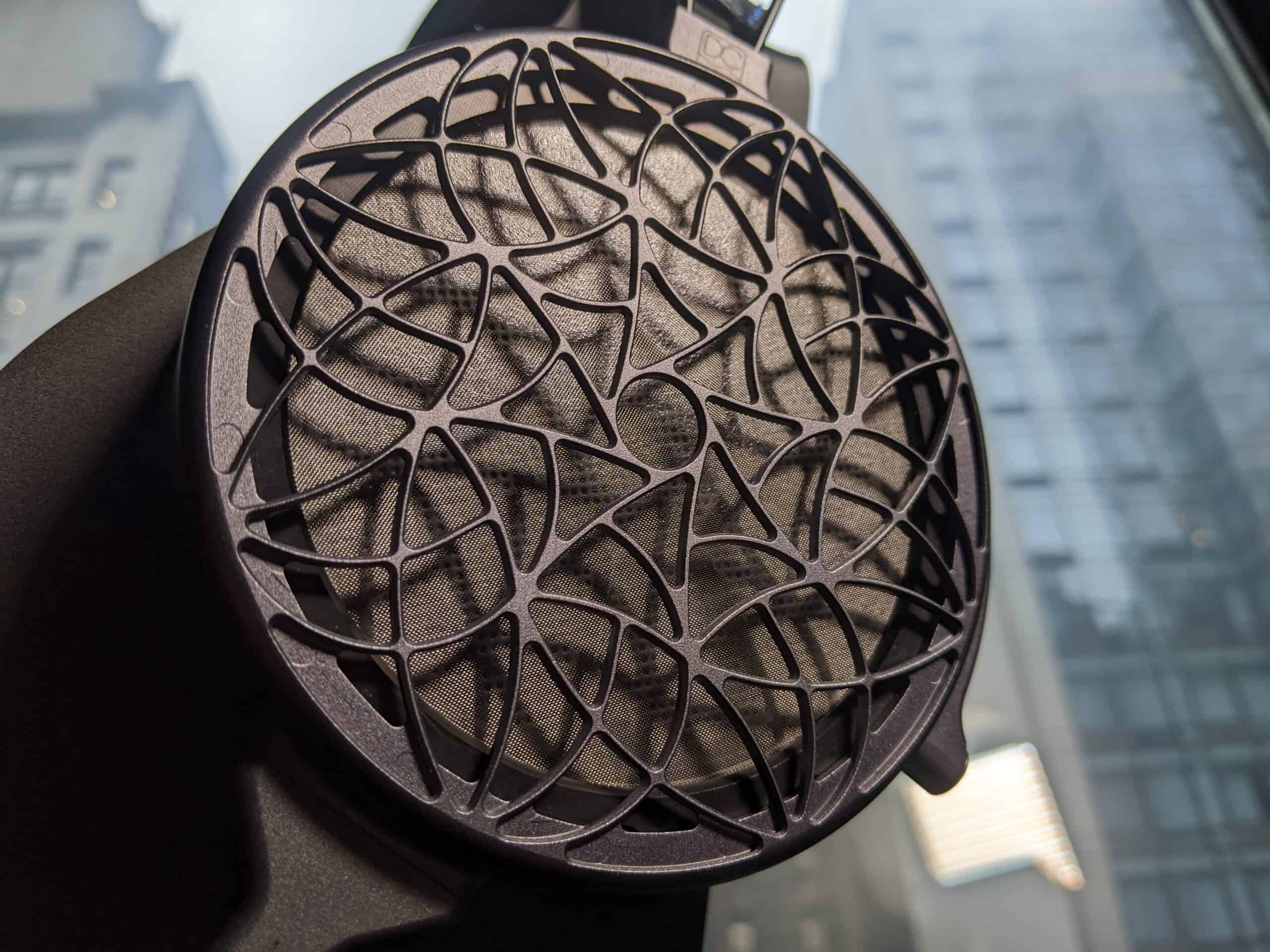
Technical Design and Specs
Let’s address what’s arguably the most important important technical feature first: the inclusion of AMTS (Acoustic Metamaterial Tuning System). Originally making its debut in the Stealth and Expanse, the Corina is Dan Clark’s first electrostatic headphone to include the component. The AMTS device is situated between the headphone driver and the listener’s ear, and consists of a series of diffusers and resonators. As a sound diffuser, it virtually eliminates standing waves which commonly occur in the higher frequencies of headphones. Resonators serve to further “smooth and shape” mid range and high frequencies, and contribute to the Corina’s tone and tuning.
Then there’s the new voicing; the Corina is building off of the concept that went into the VOCE: reducing the high frequency emphasis commonly heard in electrostatic headphones in pursuit of a richer and more pleasing tone. The company boasts of further improvements in the Corina that resulted in a stronger low end and “smoother” mid range.
The 88mm electrostatic drivers see upgrades from the VOCE when it comes to diaphragm tension and uniformity. Like I mentioned about the ear pads in the last section, left and right drivers come as a matched pair to maximize channel balance.
Last thing I’ll note here is that the drivers are significantly tilted, pictured below.
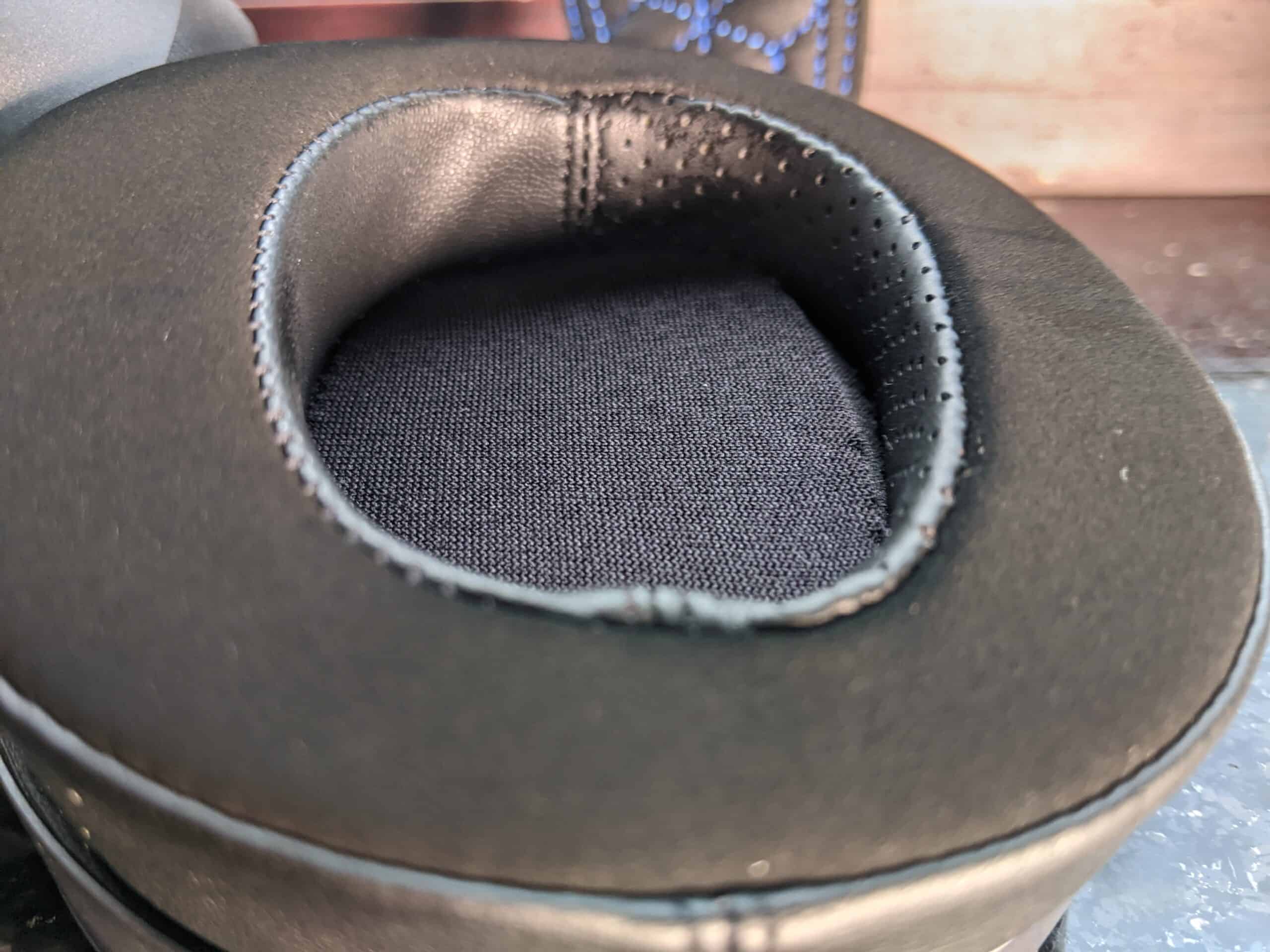
| Specs | Dan Clark Audio Corina |
| Driver | 88mm Electrostatic |
| Operation | Open-back |
| Frequency Response | “Yes (flat to 6Hz) with New Voicing” |
Technical Usage
The Corina is a very hungry headphone that takes a lot of power to drive. I”m pairing it with a STAX SMR-D50 amp for this review, connected via USB to my laptop. With my MacBook feeding the amp at max volume, I’m able to get the Corina just loud enough for me to be okay with using the amp for this review. So really, doubly true for the Corina than it is for other headphones, make sure you have a killer amp to drive it. I say this for more than just its power requirements: listening with the STAX SMR-D50 seems to be quite a different experience from when I was listening to it with the Blue Hawaii tube amp at the Dan Clark Audio CanJam table. At that time, I heard a distinct warmth and heft from the Corina that is significantly less present when listening with the solid-state SMR-D50.
In summary: you’re going to need a lot of power, and the Corina seems sensitive to its sources.
Sound Stage
The first quality that leapt out to me when listening to the Corina (this time around) was the absurd distance it could push past its cans. It’s the kind of holographic character that regularly had me taking the headphones off to check where some background noise was coming from, only to realize that I was hearing the background of a track I was listening to as if it was across the room and behind me (specific track: “All Our Base Are Belong To Them” by The Books). There’s something more analytical about its 3D character than what’s heard on the enormous stage of Dan Clark’s Expanse; the latter’s stage is what I might consider artful in its spatial character, a quality that expresses itself with reverbs and parts of the like washing across its perceived stereo image. The Corina rivals the Expanse’s stage size, but has a more “firm” character that can be heard on even the driest of tracks. I suppose what I’m saying, in part, is that there’s a more accurate and analytical character present here that positions parts with firm and jarringly exact placement.
A sensation that kept returning to me throughout my listens was feeling parts as if they originated from a sizable distance behind me. In fact, I can’t recall the last over-ear I listened to that was this keen on its behind-the-head trickery.
In short, the Corina’s stage is as enormous as you might expect from a Dan Clark flagship open-back at this point, and possesses a 360 degree character that doesn’t take much imagination to experience – rather, it seems like a central tenant to its imaging.
Balance and Other Impressions
As I mentioned earlier, I listened to the Corina through a Blue Hawaii tube amp previous to this review, which may likely account for why I heard a warm, low mid character to the headphone during my CanJam listen. Pairing it with what is perhaps a more transparent solid-state amp like the the STAX SRM-D50 has me understanding why Dan Clark is calling the Corina a reference headphone.
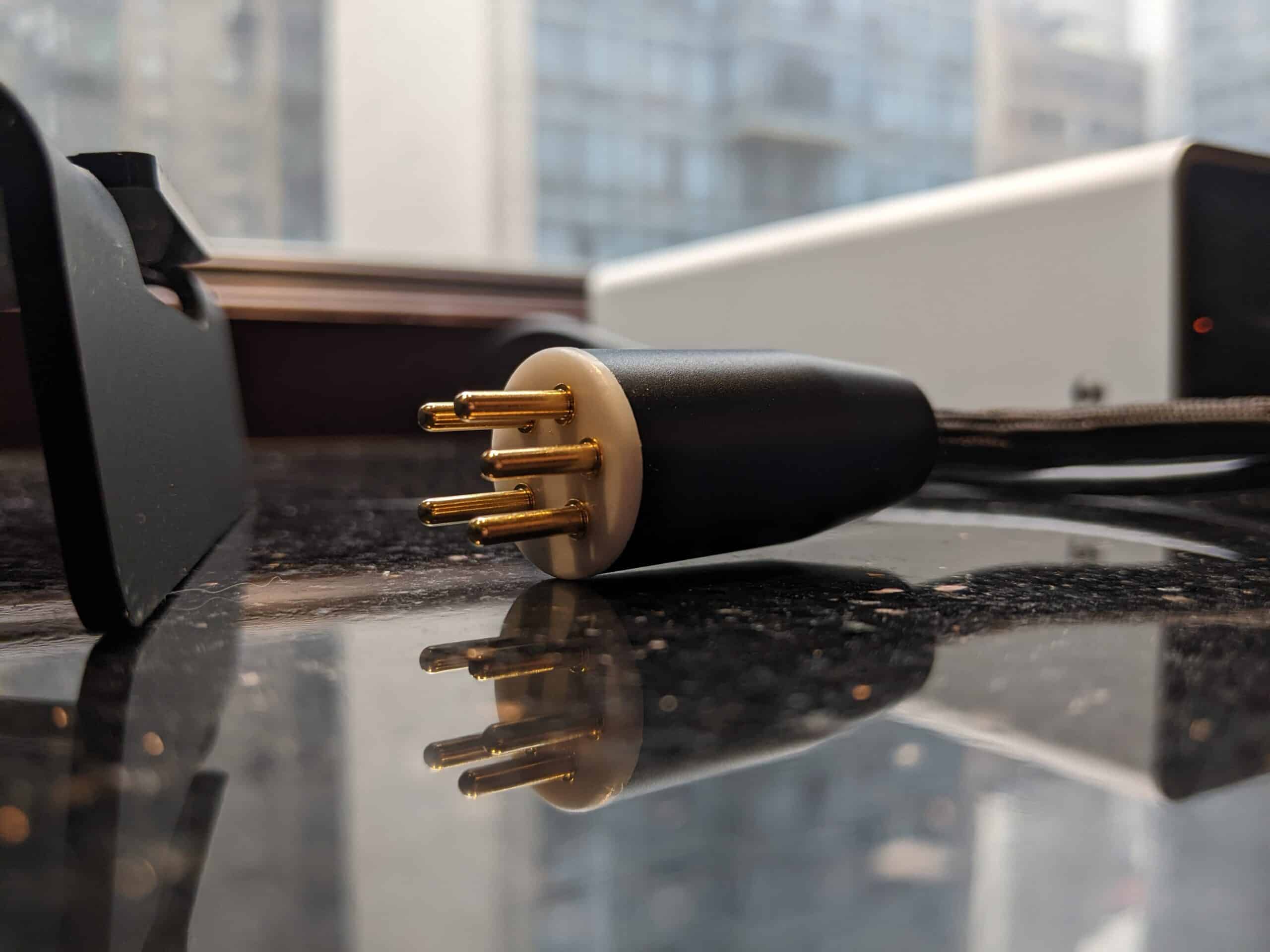
This thing is flat. Through and through neutral. Go ahead, look for its biases or coloration – going solely by ear and not testing equipment, I’m not sure that you’re going to find it (except for parts of the treble, which I’ll touch on shortly).
The biggest beneficiary of this borderline totalitarian neutrality was vocals, which presented with an intimately lifelike balance in their fundamentals, overtones and fry. I found a similar sort of character in acoustic guitars and drums – really, any and all mid range-centric parts. Just speculation, but I think this hyper-realism in the balance, working together with the matched pairings of the drivers and earpads, may be going a long way in producing the Corina’s thoroughly 3D and accurate stage – if not the cause, it’s certainly enhancing it.
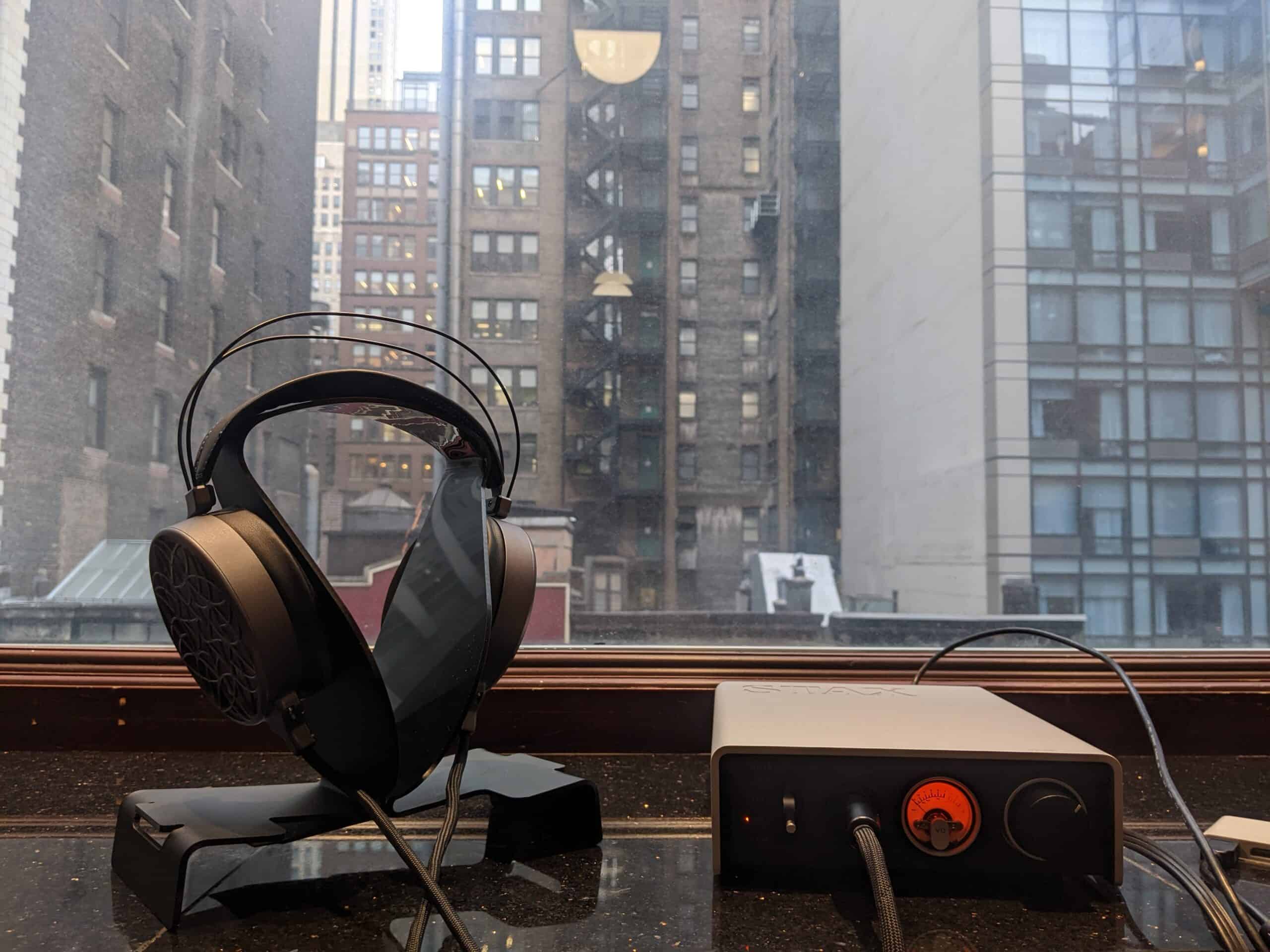
Perhaps the only deviation from flatness can be heard in the mid and upper treble, which are lightly but noticeably attenuated. This didn’t come across as darkening the balance, but rather smoothed it over. There is still plenty of high frequency resolve that pushes pleasantly against the Corina’s firm low end and mid range, but its less-forward character has it entirely avoiding risks of peakiness. “Easy listening balance” may commonly be a euphemistic phrase to read in reviews, but I use it genuinely to describe what the Dan Clark Corina is doing with its mid and upper treble levels. It’s a highly inoffensive tuning.
The only part of the balance that I wanted a little more out of was the sub-bass. While present and detailed, and I’m assuming at a fairly equal amplitude to most of the rest of the balance, I struggled to get an exciting rumble from the Corina even on my heaviest sub bass test tracks (example: “Sin donnes” by Juana Molina). In general, the Corina doesn’t offer the most tactile listens that rumble and slam. Sub and mid bass are heard more than they’re felt. But I’m speaking from a place of pure listening pleasure; when the Corina is viewed in context of a reference headphone, this low end is perfectly adequate in power and exceptionally detailed in its exhibition of timbre.
Overall
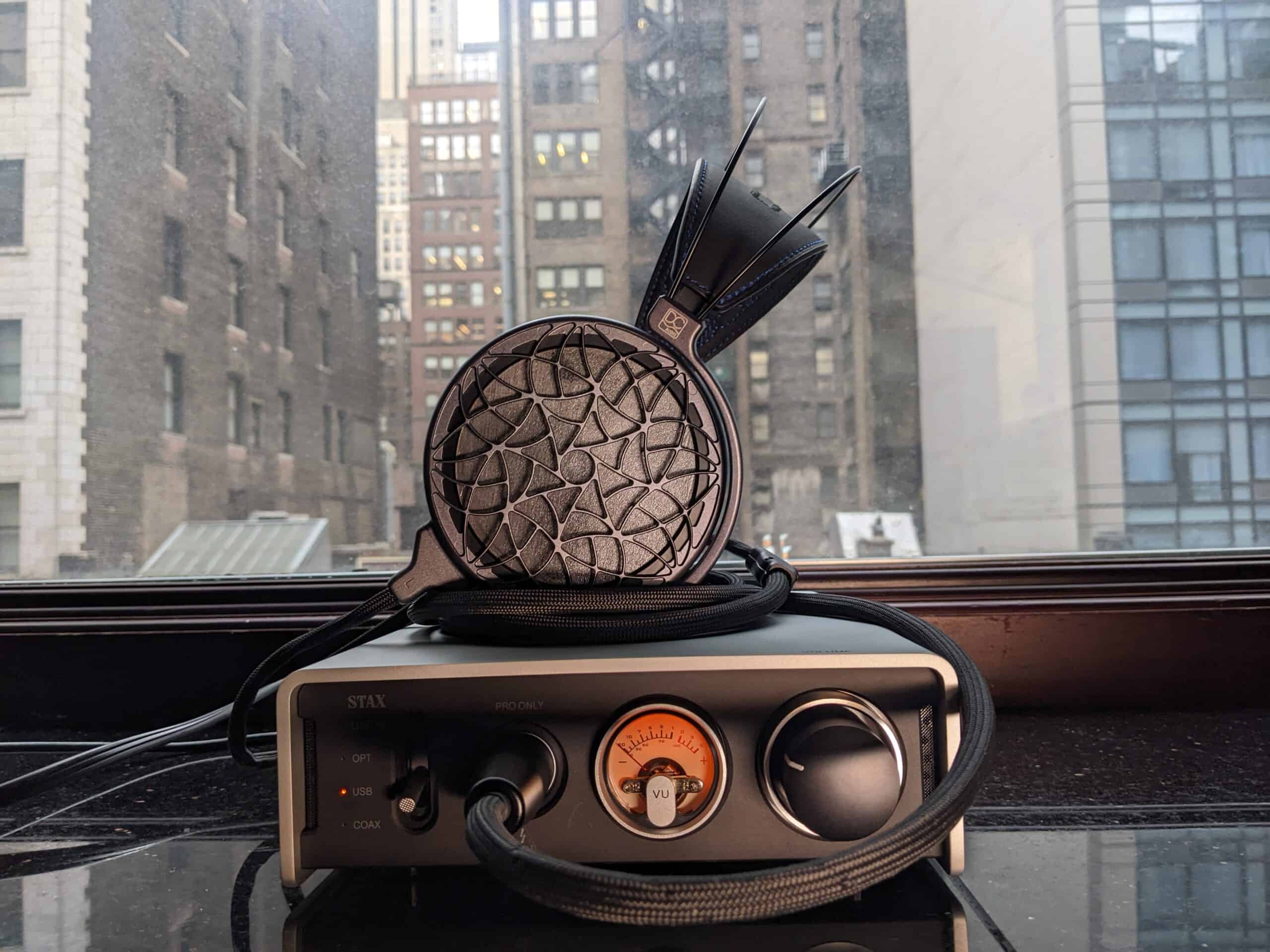
While Dan Clark’s other flagships outright excited me, I’m left with a different feeling about the Corina, but I’m no less impressed. If I wanted to be reductionist about it, I would simply call its overall sound “proper.” There are some high-end headphones that can entertain newbies and seasoned audiophiles alike, while others possess more subtle premium qualities that are best appreciated by more experienced palates. I think the Corina may fall into the latter category – though its massive and jarringly accurate soundstage may be one feature for the former. It offers a level of realism that very few headphones can compete with, and does it in a classy and comfortable package. It’s perfectly worthy of joining the high ranks of the Expanse and Stealth, and offers a one of a kind sound for an electrostatic headphone.
You can purchase the Dan Clark Audio Corina here from Audio46.

Compare the ranking of various headphones, earbuds and in-ear monitors using our tools.
Discuss this, and much more, over on our forum.
---MAJORHIFI may receive commissions from retail offers.


